It’s a sunny day. Judging by what the previous groups who have been here before have told us, we only expect the weather to get even hotter as the day drags on. That’s actually a better prospect than when it rains, right? So I guess no one’s really complaining.
Immediately I notice how red the soil is (something I’ve noticed to be characteristic of the landscape here).

We were asked to assemble for a briefing to discuss the do’s and don’ts, the basics in biking, which gear is for what, and stuff. It was impressed upon us that this is not an individual race. Hence, we need to help each other out in order for the whole team to finish fast. Any member of the team struggling should be helped out. Now that’s something worthy of emulation in real life, don’t you think?
We are to finish a 12-km stretch of rough/dirt roads, with pit stops along the way for when we need to recharge – drink to quench our thirst, eat, relax, take selfies/groupfies, or just be silly with one another.
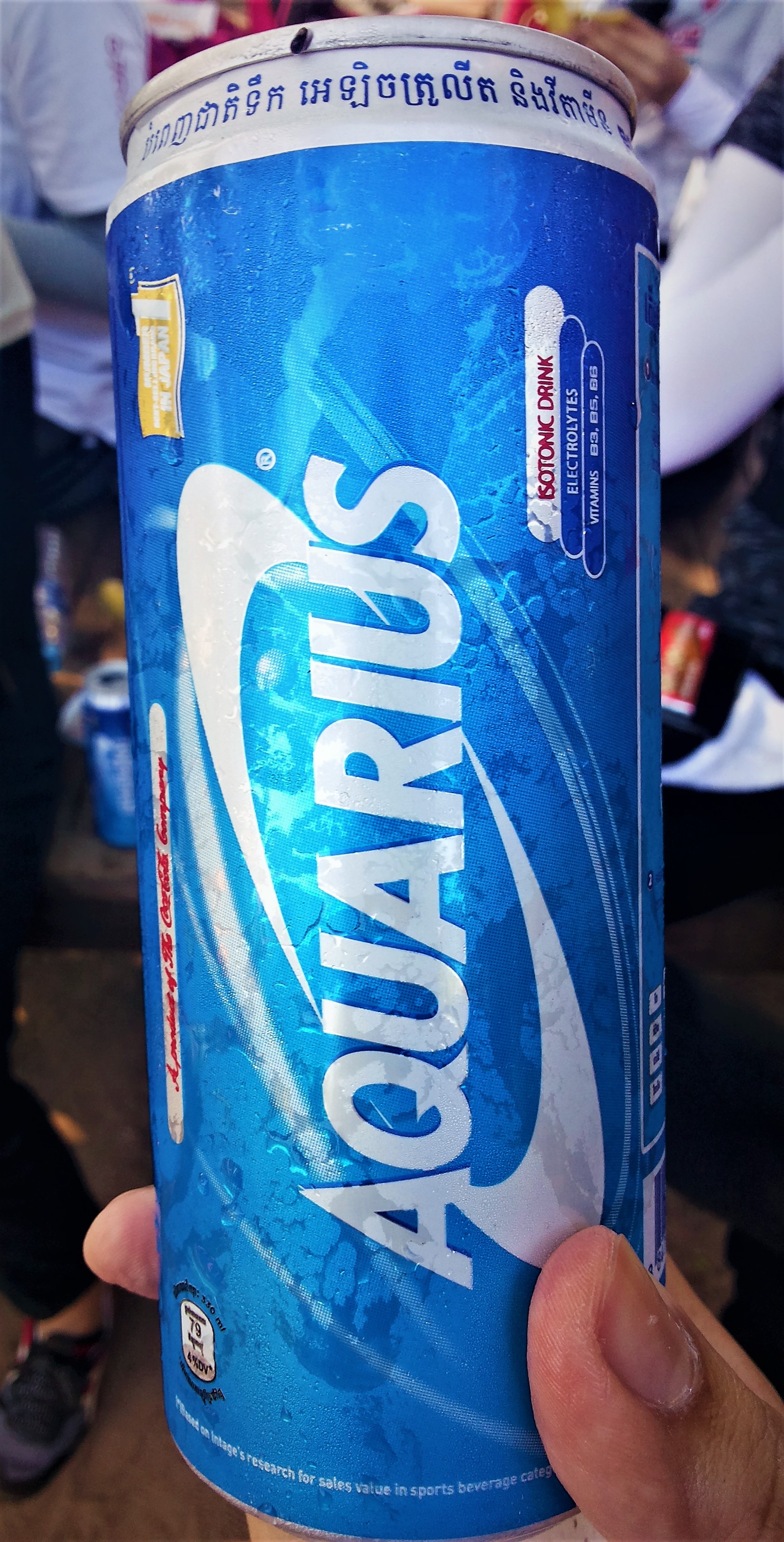
Despite the heat and exhaustion, one can admire the scenic view of the Cambodian countryside, complemented by a soft breeze generated by one’s own motion against the tepid air. I can only appreciate the simplicity of life here. Time suddenly stood still.

At the finish line, we were treated to the sight of an elaborately decorated Buddhist structure known as pagoda. Pictured below is the Phreah (Preah) Dak pagoda. It’s also a functioning monastery for monks so it’s alternatively called the Wat Phreah Dak.
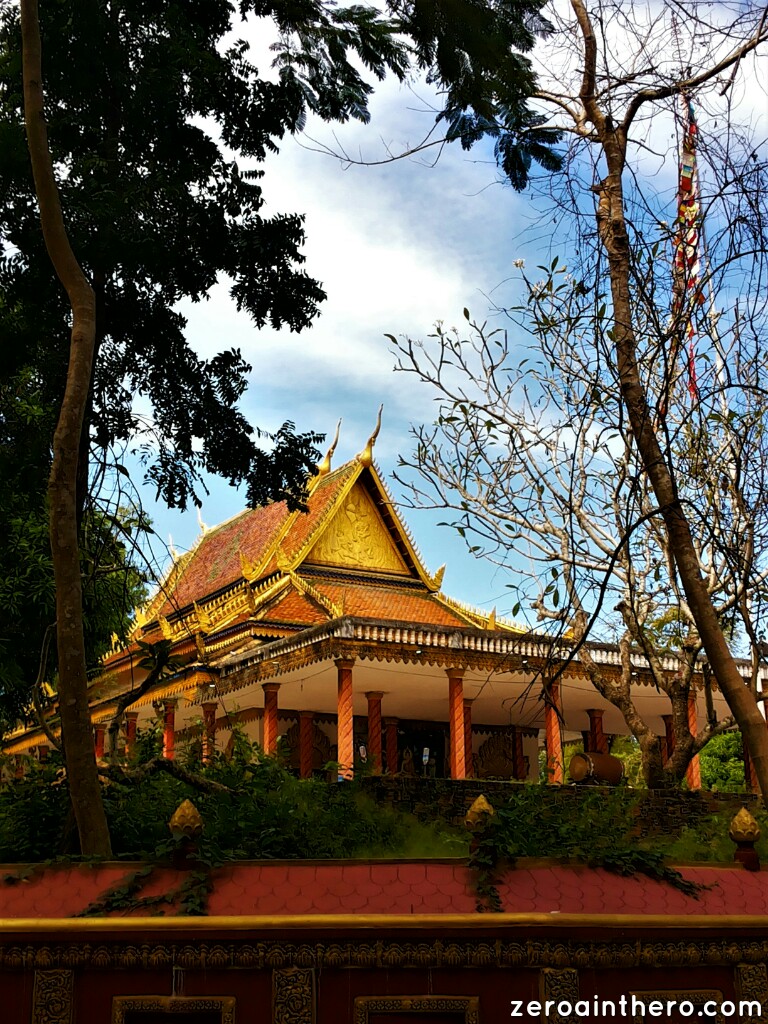
I notice a lot of these interesting, colorful structures with spires in the temple grounds. Wonder what these are?
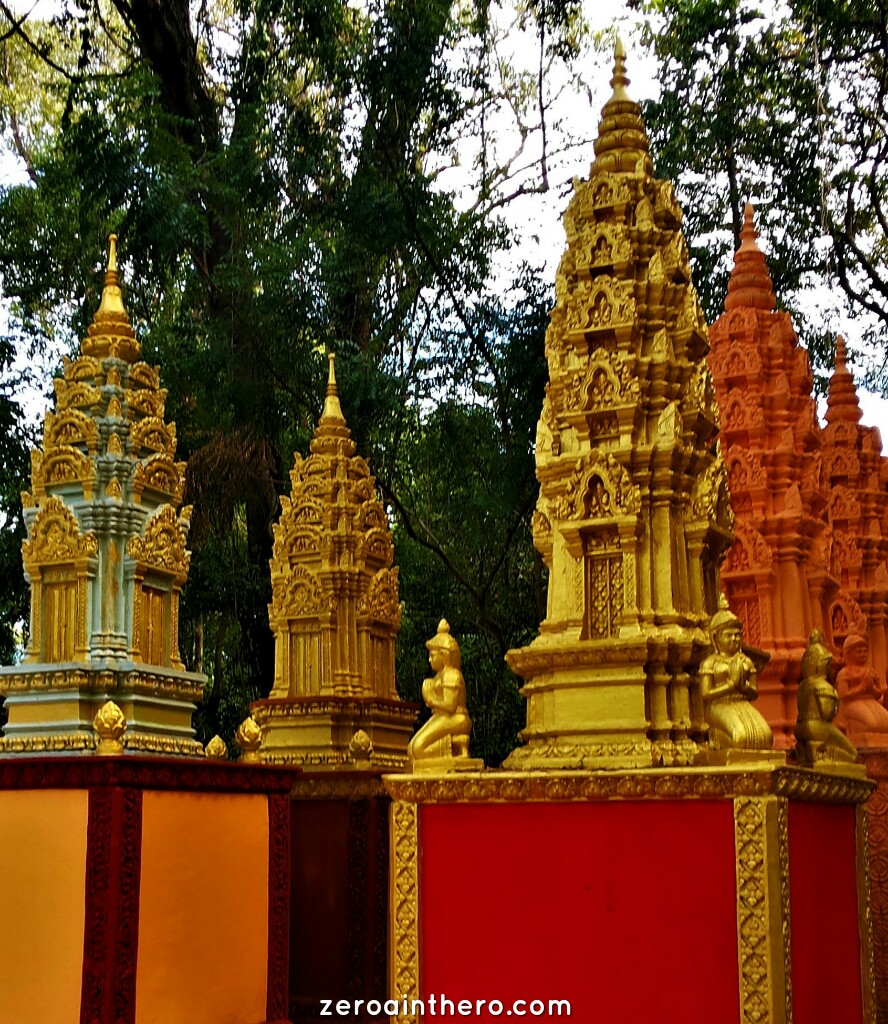
As explained by our tour guide Sip, these are known as stupas. They basically are tombstones that houses cremated ashes of deceased Buddhists. The more elaborate and bigger in size the stupas are, the richer the person (or the family of the person) who died who affords it. The deep colors represent peace.
Cambodia is 97% Buddhist, who believes in reincarnation. Death is merely a phase, a doorway to another existence – a rebirth. The remaining percent are Hindus, Muslims and animists, and a sprinkling of some Christian denominations. It’s interesting that in some of the villages we passed by in our route, we notice houses built in the second storey but nothing on the ground. The reason being that people believe spirits occupy the ground level. Humans would do well not to disturb them, I guess. This belief in spirits both benevolent and malevolent are strongly-entrenched in some areas that it’s common to see small, deeply-colored spirit houses (for spirits of dead ancestors) and local version of scarecrows (to repel evil ones) posted in front of homes. (I’m literally having goosebumps writing this, so enough already 😐 )
Let’s move on.
Now all this activity is making us hungry. So, we next headed off for lunch. But wait. As the tradition goes nowadays, it seems, we first had to learn how to cook our own food. Chef Khan Van Chhay demonstrated how to create spring rolls! I’m not sure if Cambodians traditionally would have their spring rolls deep-fried, but we definitely thought of it as a welcome gesture that he had it cooked that way, as an homage to our Filipino culture.
We even had a contest of who finishes cooking first with the most number of rolls passing quality check, to be pitted against the other groups. It was a fun activity and, suffice it to say, we’ve made some pretty bomb spring rolls (holler! 😀 )
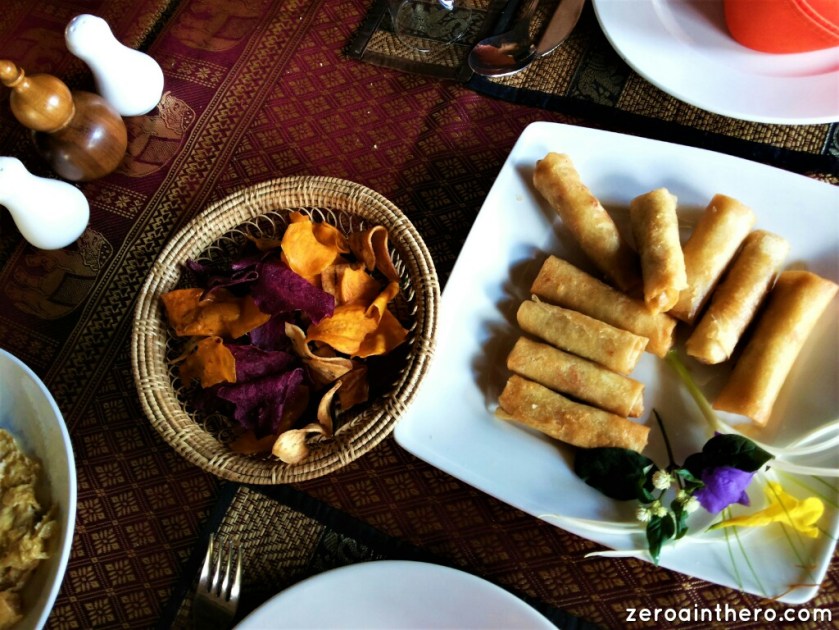
Afterwards, we were treated to a parade of Cambodian dishes, plus the spring rolls we just made.
I appreciate the fact that they are big on veggies and salads, although the taste doesn’t always sit well with a lot of my peers. It’s an acquired taste, I suppose. I am definitely sensing some cilantro, star anise, in most dishes. There are some I probably haven’t heard of and have been trying for the first time, or just something we are not used to eating. I’ve been tasting everything because I’m adventurous like that when it comes to food.
We headed off next to a small house that has some shack where traditional rice noodles are made. It seems like creating rice noodles is as tedious as planting rice itself – from the pounding to the mixing, to the cooking, to the washing. Maybe I will just skip to the eating part, yeah? 🙂
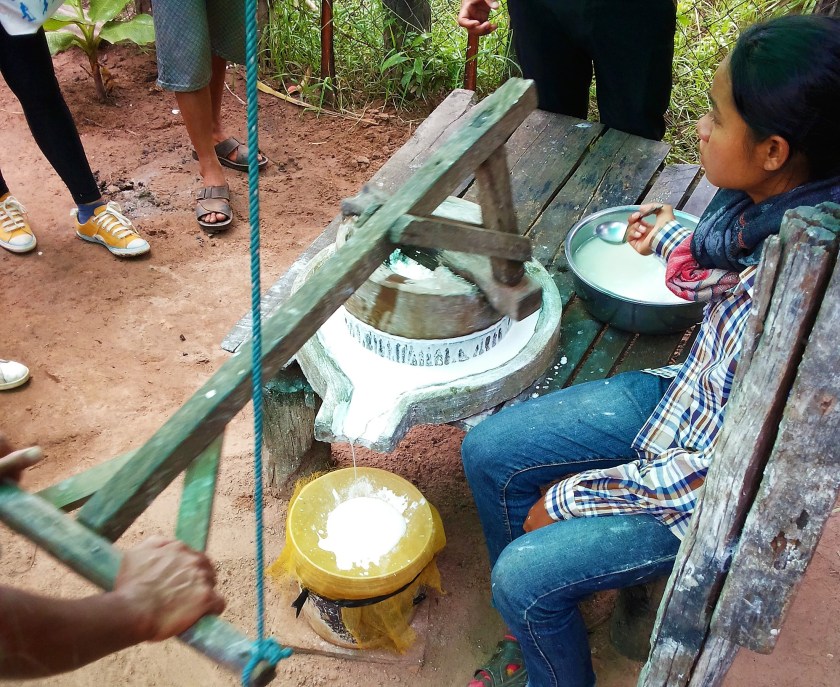
They’ve been using some curious contraptions where the noodle-makers literally had to ride on top in order to function, like when pounding the mixture, wherein someone literally has to step on the lever on the other end (much like how a see-saw would work), doing it repeatedly in a particular rhythm, so that the person on the other end could fold the mixture in sync with the steps. Otherwise, that person could get injured. It takes skill and a great deal of caution especially if you are on the receiving end of the pounding machine. Kung sa atin pa, “buwis-buhay”, “putol a-kamay” 🙂
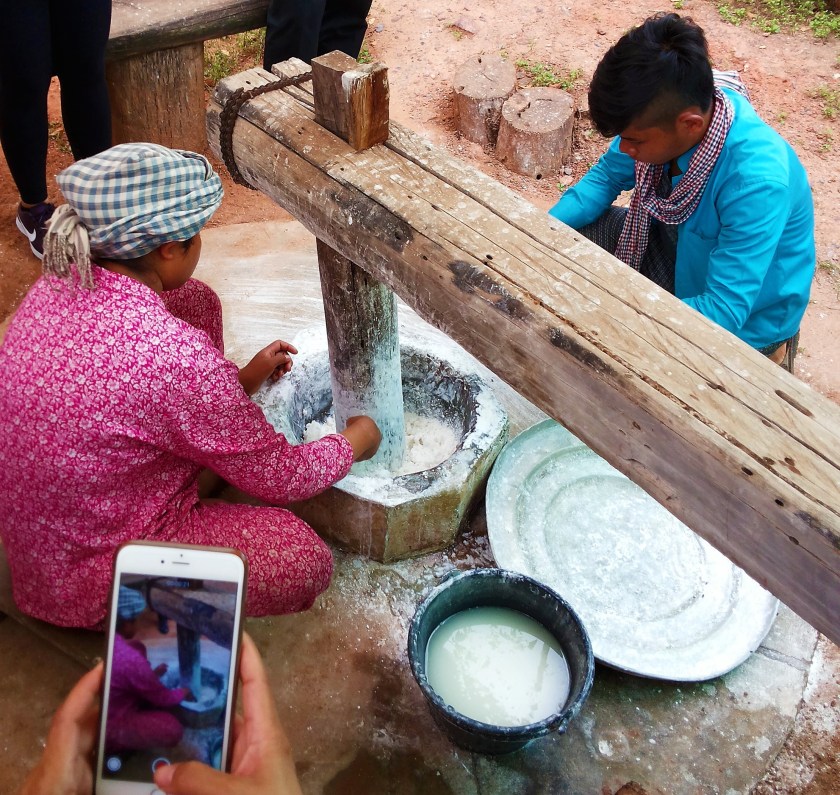
Or, when pressing the goo out of the perforated container/thingamajig to be dropped on to the huge cauldron below with simmering water, where it has to be done gently but with much weight, such that the person doing it literally had to sit or ride over the lever using his full body weight but careful enough not to crush the precious cargo. The idea is to press slowly and gently in order to create long, continuous strands. It’s literally what you call, a “tough, balancing act” 😀

If anything however, it makes for good exercise since you partly might also need to lift your own body weight in order to strike that “balance”. There’s a bar or beam above which you can hold on to, to lift yourself up in case you need to relieve the pressure on the “soon-to-be” noodles.
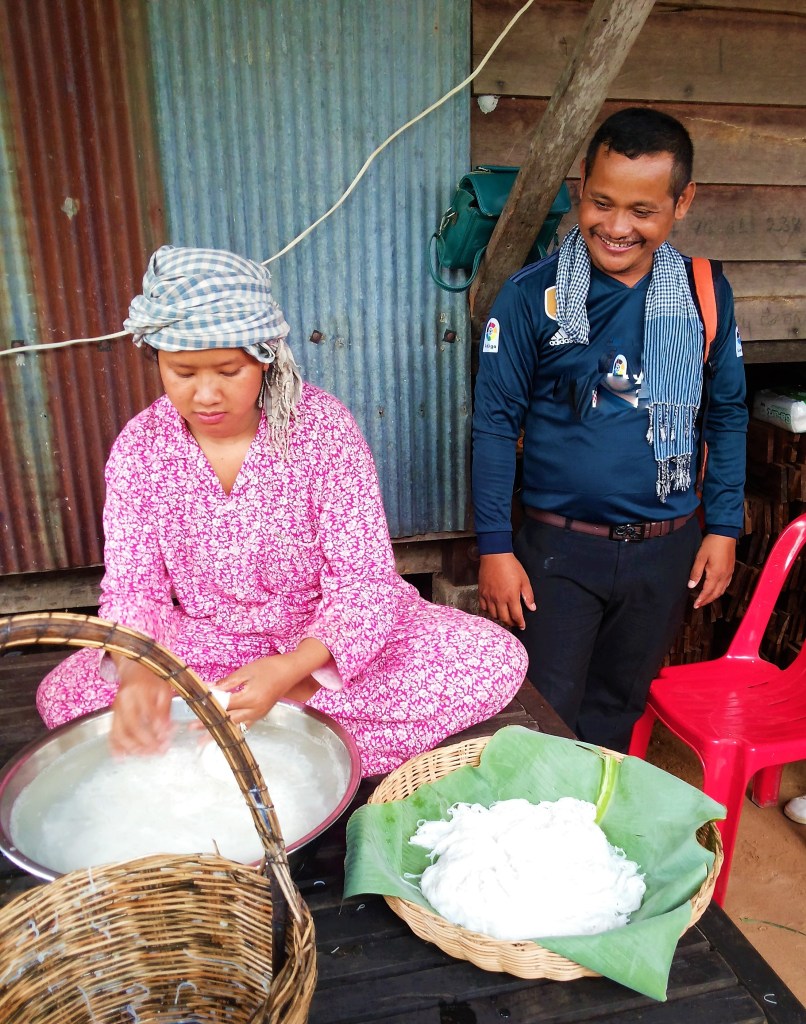
Remember Chef Khan Van Chhay? Well, he’s here again to demonstrate how to cook a traditional Cambodian rice noodle dish called somlor brorheur (pronounced somlor brahar). And to assist him is Mrs Team Hup. I couldn’t find any reference to her online but I’m guessing she is the owner of the house and maybe one of the few people who is keeping the tradition of rice noodle-making alive.
She was featured in the Cambodia Chefs magazine.
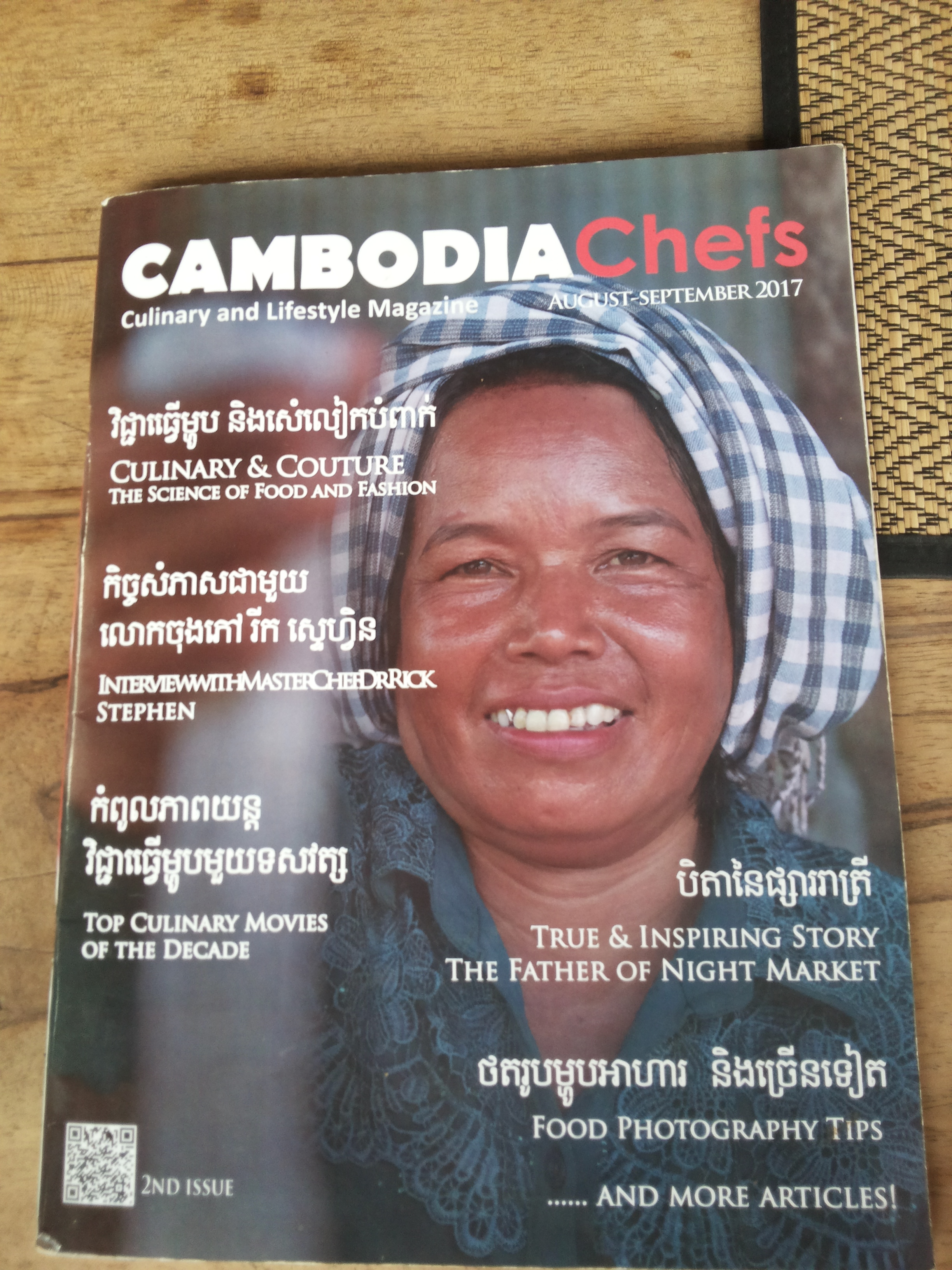
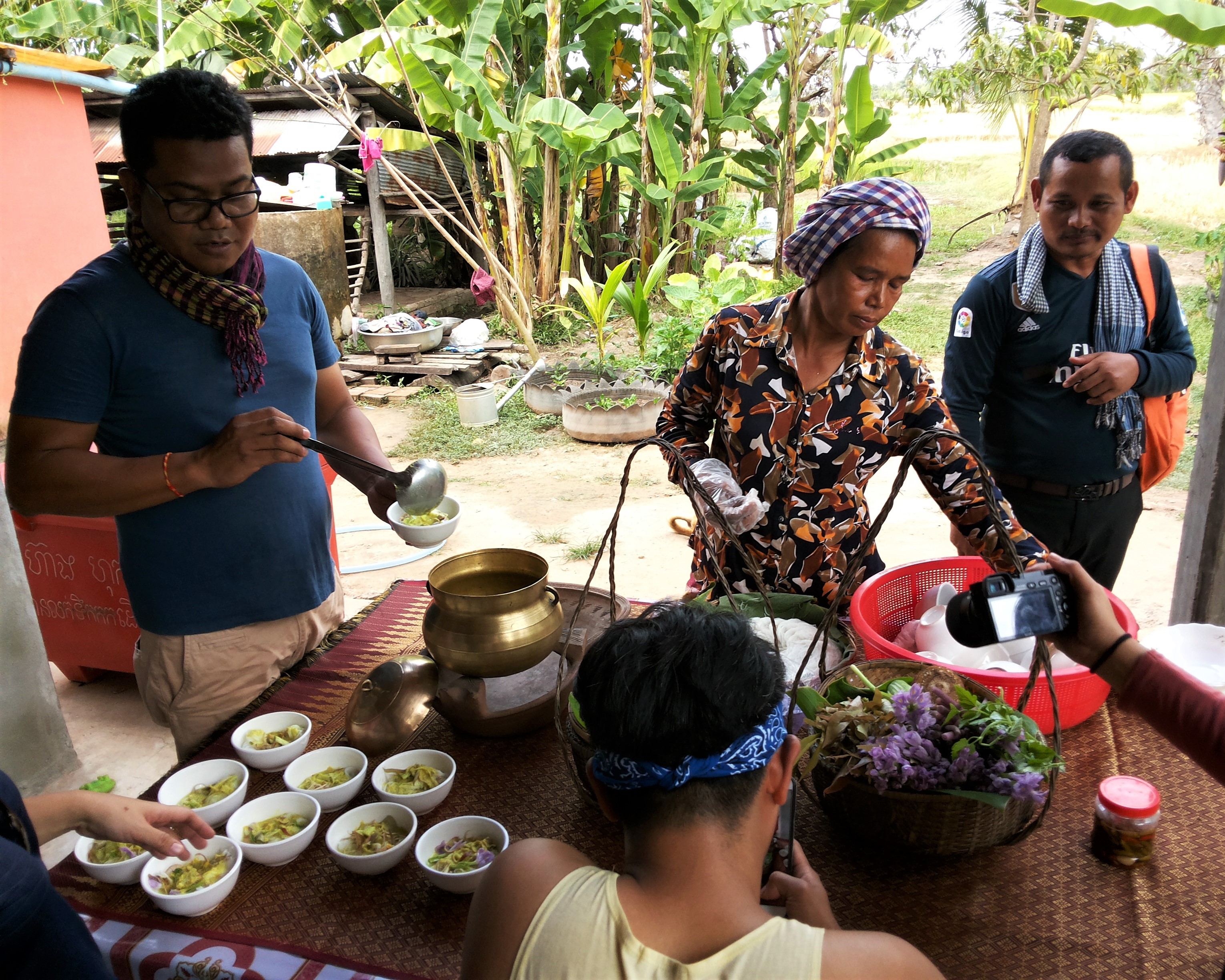
Chef Khan Van Chhay (left) and Mrs Team Hup (middle) at work. And Sip, well, being his usual self 🙂
Presenting, somlor brorheur.

Next stop is a traditional Cambodian farming village. But in order to get there, we have quite an unusual ride waiting for us at the jump-off.
Water buffaloes! 🙂

When we arrived at the village, we were welcomed by the local kids with a song and were given some neatly rolled cold towels so we could freshen up by wiping it on our face and hands. With the extreme tropical heat, nothing feels better than a nice cold towel! 😀
As you may have guessed, we are in a rice farming village for a reason. There’s a traditional Filipino song that goes: “Magtanim ay di biro. Maghapo’ng nakayuko”. It translates loosely to: “Planting (rice) is not easy. Everyday you are in a stooped position”, which basically signifies backbreaking work. This day wouldn’t go by without us having to experience this as this is pretty much the lifeline of all Asian cultures. Rice is such a ubiquity. One can say that the foundation of Asian civilizations stood on the back of this lowly member of the grass family, feeding millions, serving as catalyst for growth.
And so, plant rice we shall, barefooted and all 🙂 To the rice paddies we go!



After that one-of-a-kind experience (it’s not everyday you see a city-dweller planting rice, yes?), we were asked to go back to the village since it’s already starting to rain. We washed our feet in the communal wash area where water is still pumped from the ground, just like in the old days. We were then treated to some refreshments (my favorite is the “buko” or coconut juice) and some traditional Cambodian song and dance.
It really was an exhausting day – fun, but exhausting. I think most of us dozed off at the bus on the way back to the hotel. And just when you thought you could finally go to your room and indulge yourself in some nice, warm shower, drop to your bed and sleep to your heart’s content, lo and behold, Sip just had to burst your bubble by announcing another activity. And just like that, your anticipated R&R was thrown out the window 😀
We headed back to the hotel, the La Residence Blanc D’Angkor, to freshen up and change.

We had dinner at the Phare Cafe, where one of the items on the menu is the famous fish amok. As usual, there’s always the salad, and for dessert we had some (I think) caramelized banana with rum and grated coconut. There’s a Filipino dessert which is interestingly similar. We call it minatamis na saging.
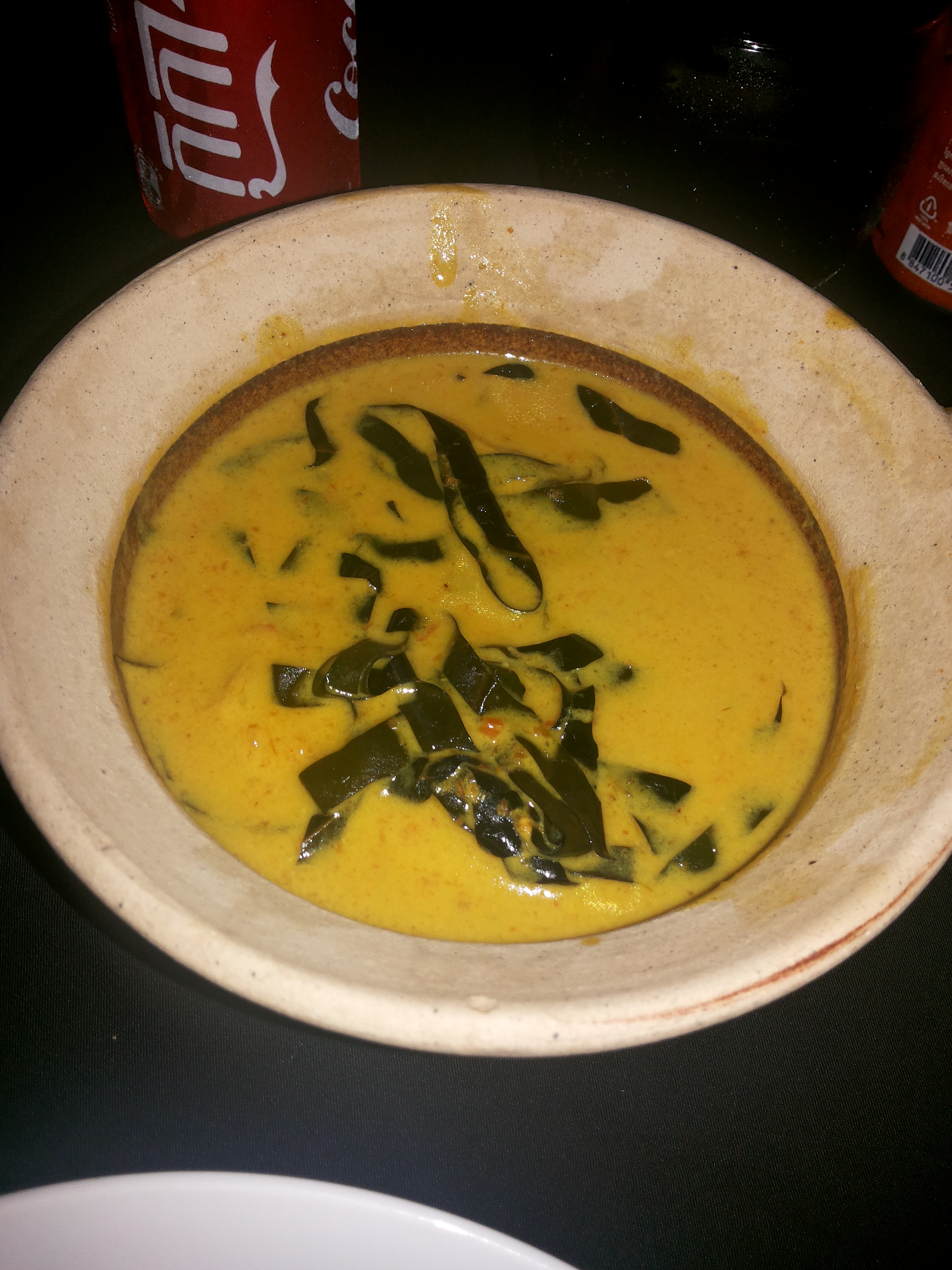
Fish amok, or more like ‘coconut milk with some floating greens’ 🙂 Sorry, this photo doesn’t give it justice. It’s so dim in the restaurant. 
We capped the night off with a spectacular performance from the Phare Cambodian Circus. No, not that kind of circus. No animal was harmed or even involved in any of its production. It’s all display of acrobatic skills – part-theater/part-acrobat. And it’s for a good cause, too. It’s helping Cambodian youths stay out of the streets, giving them better opportunity by making better use of their skills and talents. Should you ever go to Siem Reap, do watch their show. It’s amazing! 🙂
I’m leaving you with some of the photos of that night. Stay tuned for part 2 of this series on Siem Reap. Enjoy! 😀

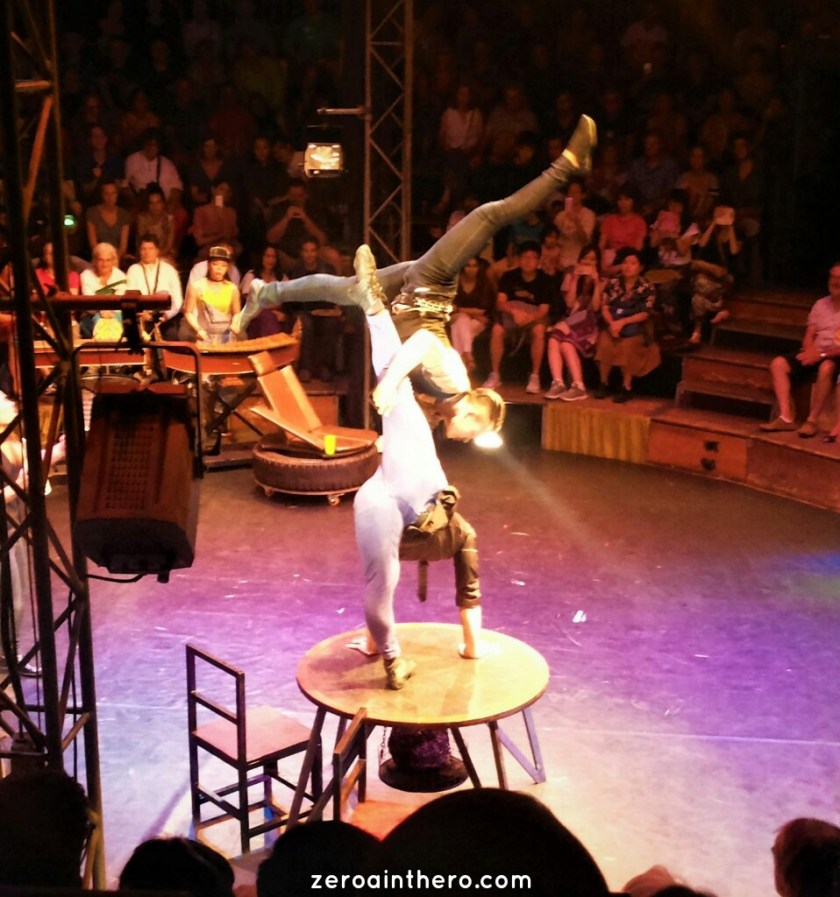


Special thanks to Cambodia Cycling and Real World Adventure for arranging our cycling adventures of the countryside and our sampling of the local culture.
To La Residence Blanc D'Angkor for our accommodation. Their friendly, caring and attentive staff made our stay enjoyable.
Find them on Facebook:
@CambodiaCycling
@realwordadvanture
@residenceblancangkor



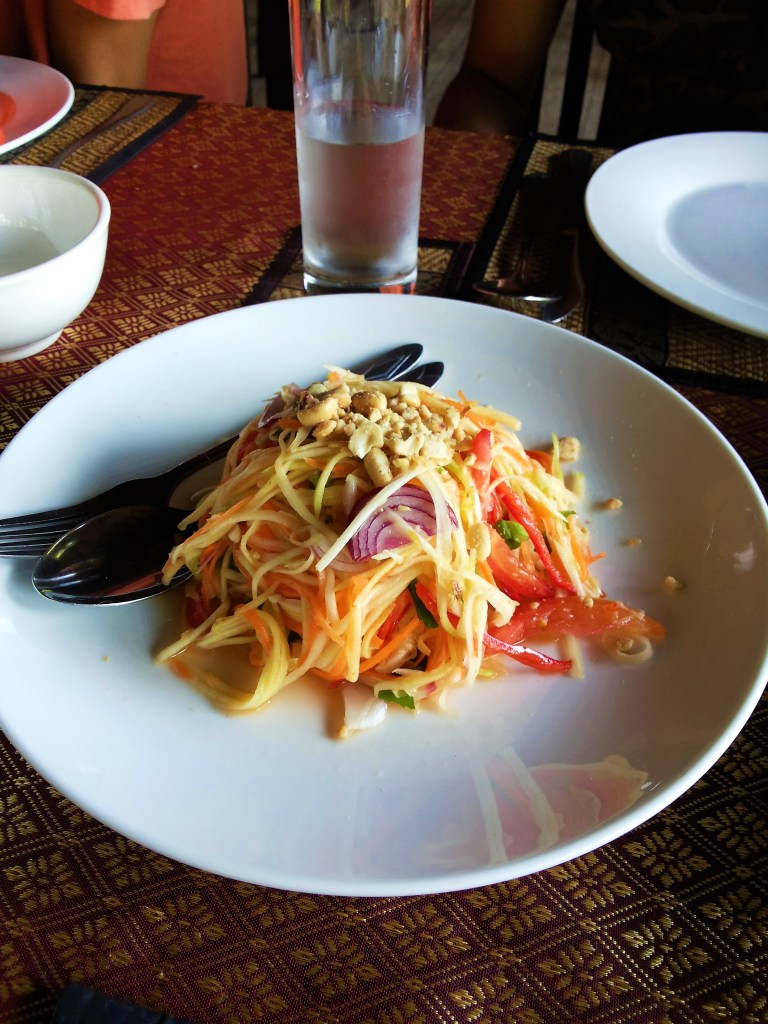
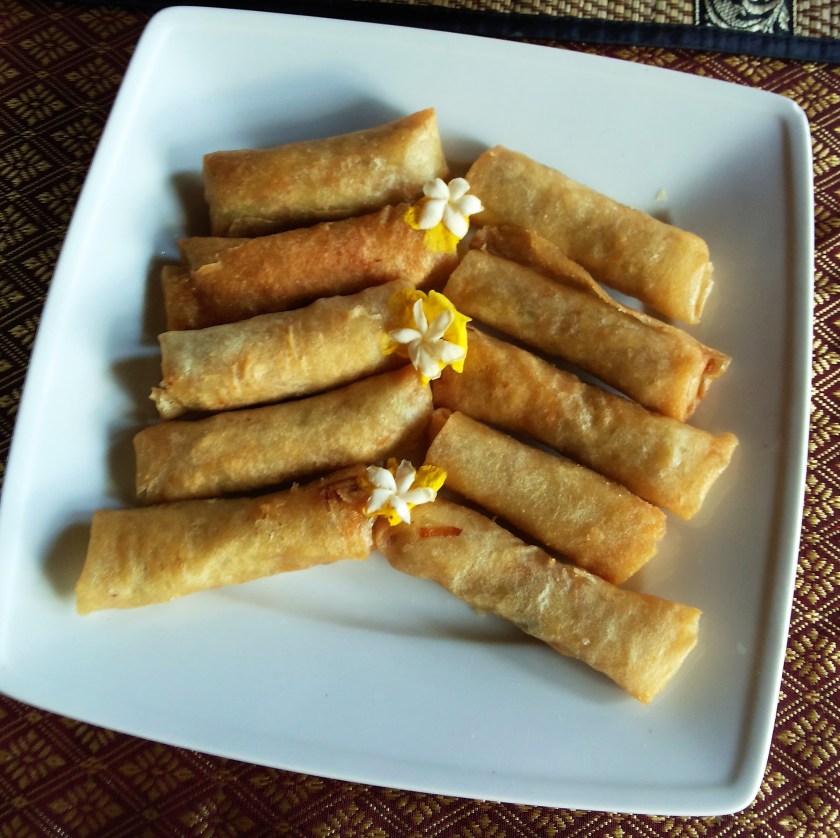
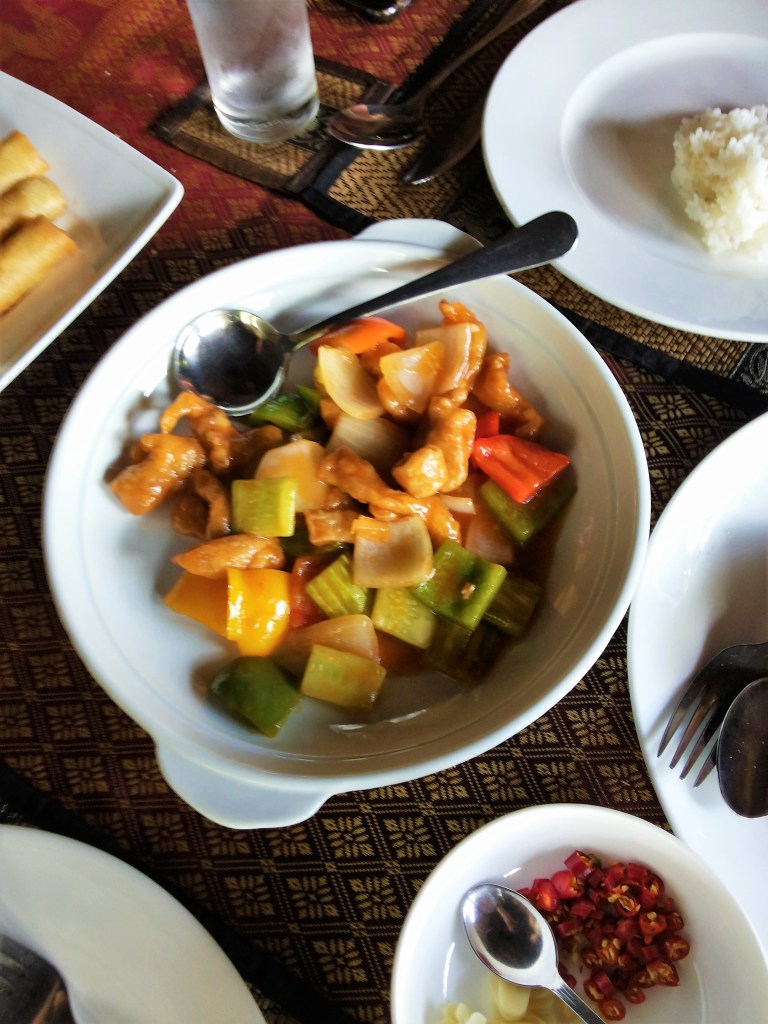
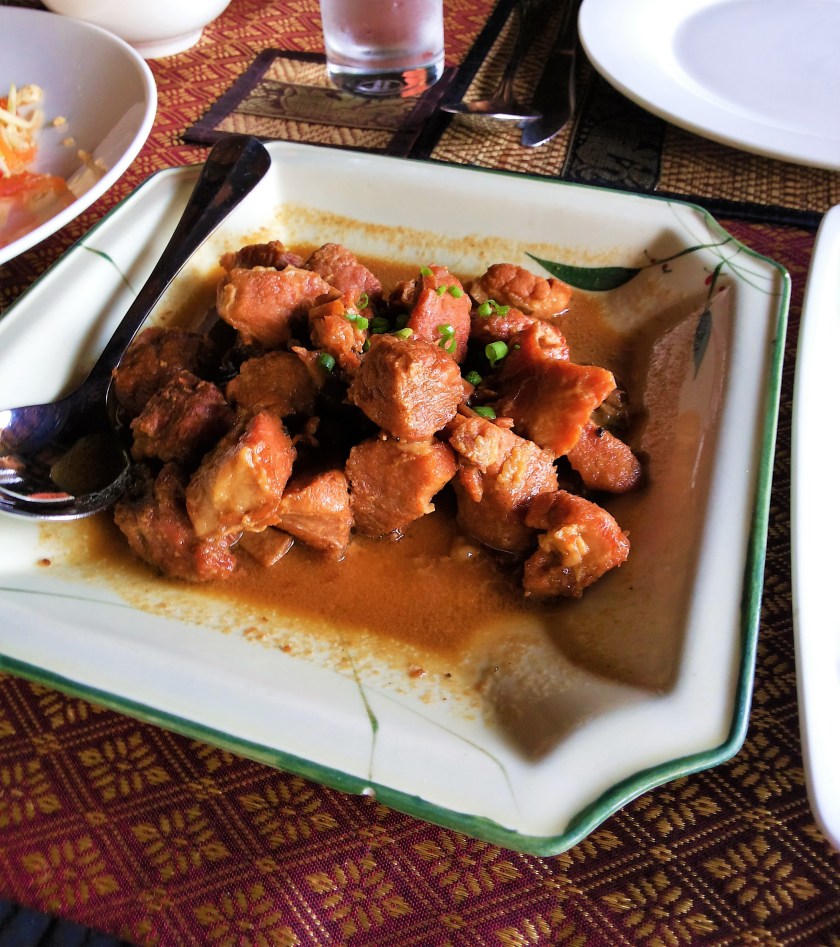

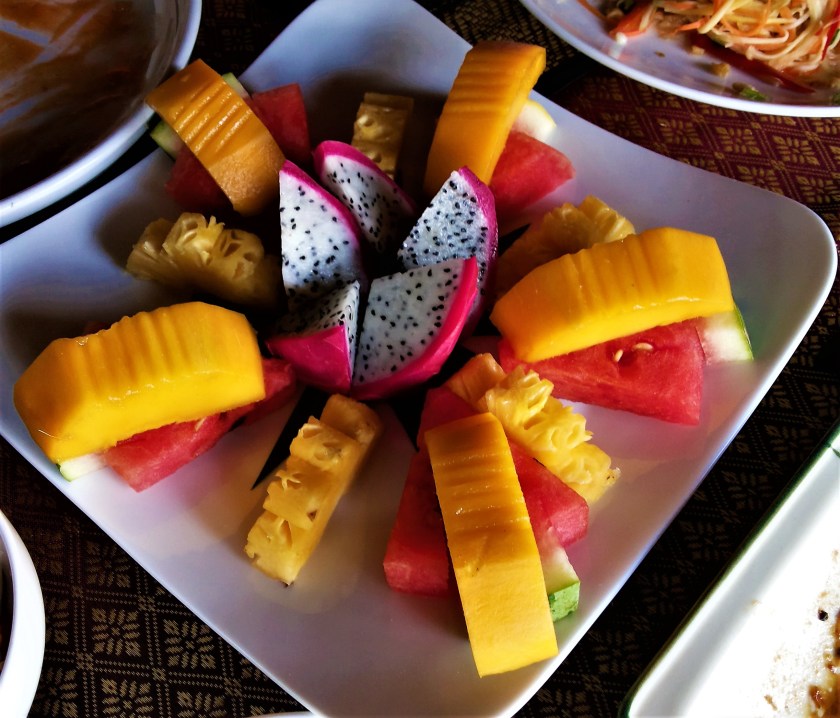
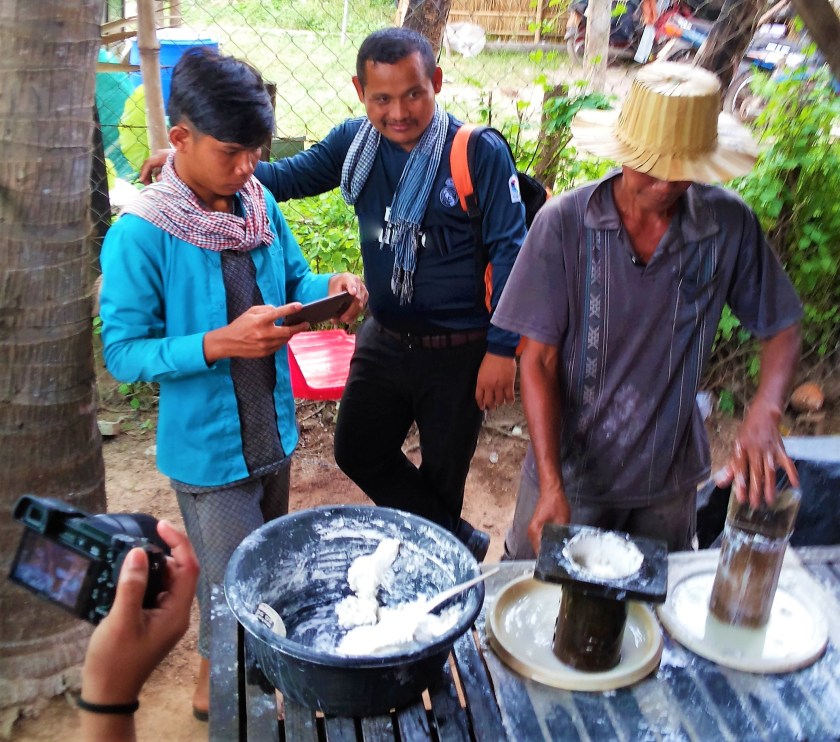
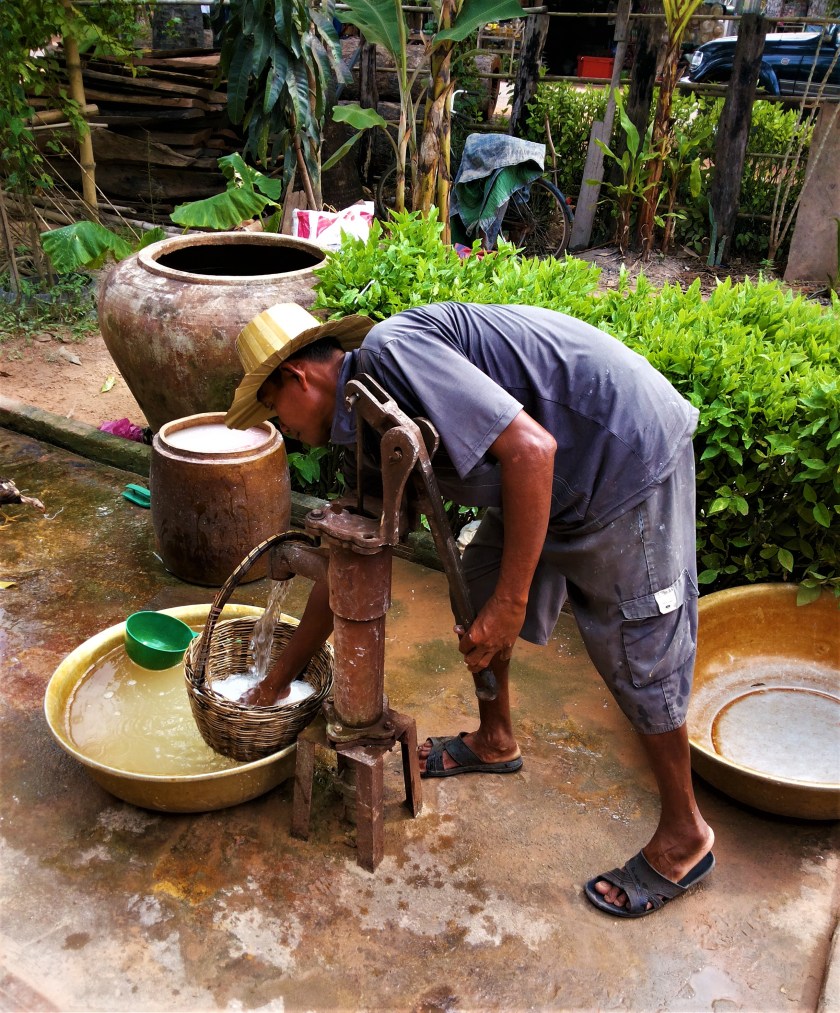
Naks Onin. Ubiquity!
LikeLike
Yeah. The term is becoming ubiquitous already, haha!
LikeLike